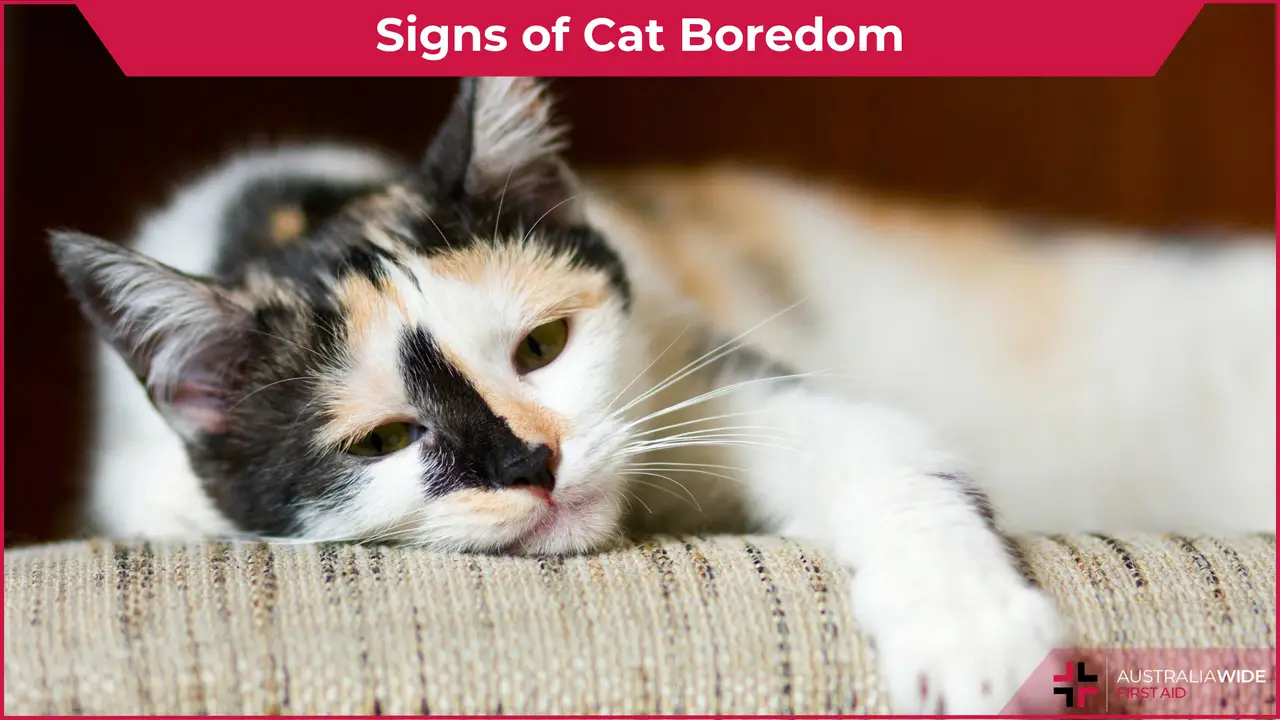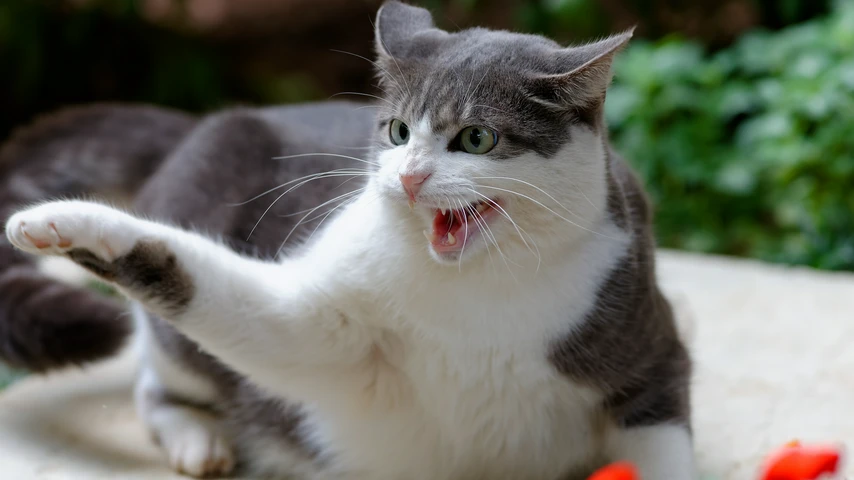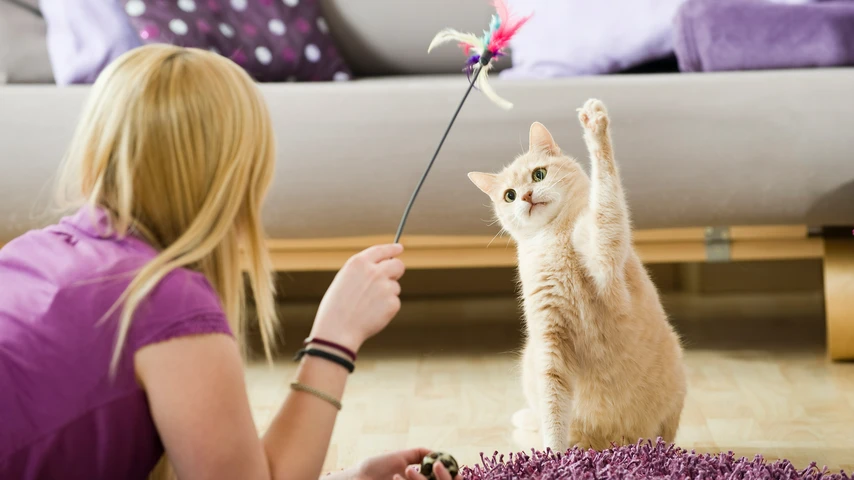Signs of Cat Boredom and Tips to Help Your Cat


Believe it or not, boredom in cats is a real thing. While cats are known to sleep up to 15 to 20 hours a day, it may very well be a sign of boredom in your Australian cat.
This can cause them to suffer mentally and physically as well. Thus, it is essential to recognize the signs of boredom in cats and take proactive steps to address it. In this post, we will explore the causes, symptoms, and potential impact of boredom on indoor cats, along with practical tips to keep your Australian kitty content and engaged.
Soon, you will be able to recognize whether your pet is pathologically bored or just having the occasional lazy day.
While our feline companions may be snug and safe indoors, the lack of outside activity may have many harmful effects on cats. Indoor cats, by nature, have limited stimuli compared to their outdoor counterparts. Understanding the factors that cause boredom in cats is crucial for pet owners looking to enhance their cat's quality of life.
Lack of Environmental Enrichment
Indoor spaces can be monotonous for cats as cats are active animals by nature. A lack of stimulating objects, hiding spots, and climbing structures can leave them craving mental and physical engagement.
Sedentary Lifestyle
Cats are natural hunters and explorers and require playtime to fulfil their natural instincts. Without opportunities for play and exercise, they may become lethargic and bored.
Loneliness
Cats are social creatures, and prolonged periods of solitude can lead to boredom. This is particularly true for single-cat households who do not interact with their owners or other pets.

Recognizing the signs of boredom in your cat is the first step in addressing the issue effectively. Look out for the following clues:
Excessive Grooming
Boredom can manifest as overgrooming in cats. Under stimulated cats may engage in persistent licking and grooming behaviours, leading to the development of bald patches or skin irritation. This excessive grooming often serves as a self-soothing mechanism for cats experiencing boredom.
Destructive Behaviour
Indoor cats may resort to destructive behaviour, such as scratching furniture, chewing on inappropriate items, or shredding curtains when bored. These violent actions are a way to alleviate boredom and grab your attention.
Weight Gain or Loss
Similar to humans, cats might go through changes in appetite and weight that can indicate boredom in cats. Some cats may overeat due to stress, while others may lose interest in food altogether. Either way, cats would suffer physically, further deepening their inactivity and boredom.
Aggression or Withdrawal
Boredom in cats can lead to behavioural changes, including aggression or withdrawal. If your cat becomes unusually irritable or withdrawn, boredom could be a contributing factor. Boredom in cats can also manifest in violence towards other cats and animals to release unused energy.
If you notice persistent signs of boredom in your cat, it's essential to consult a veterinarian.
They can help you rule out underlying health issues and guide you on addressing behavioural concerns.
Seeking professional advice is especially crucial if changes in appetite, excessive lethargy, or other concerning behaviours accompany boredom-related symptoms

Boredom in cats isn't just an attack on your cat's mental well-being. This kind of lethargy can have tangible effects on their physical health and overall happiness, affecting your kitty in the long run.
Obesity
Lack of exercise and mental stimulation in your cat can contribute to weight gain, posing health risks. Obesity is a rising concern among indoor cats in Australia, and boredom from excessive inactivity indoors is a significant factor.
Stress-Related Illnesses
Boredom in cats can lead to stress. Worryingly, this may manifest as urinary tract issues, digestive problems, or skin conditions.
Behavioural Problems
Untreated boredom in cats can escalate into more severe behavioural problems, affecting the bond between you and your cat. As pointed out before, it can lash out at you and other animals, possibly leading to severe injuries.
Now that we have an understanding of the causes and impact of boredom, let's explore practical solutions to keep our indoor Aussie cats entertained and fulfilled.
Interactive Toys
Invest in toys that encourage mental stimulation and physical activity. These include gadgets such as puzzle feeders, laser pointers, and feather wands.
Window Watching
Position a cat tree or perch near a window, allowing your cat to observe outdoor activities. This can be particularly captivating for indoor kitties.
Vertical Spaces
Cats love to climb and explore high spaces as it is reminiscent of their natural instinct ot climb trees and observe their surroundings. Items such as cat trees, shelves, and window perches prevent boredom in cats while still allowing you to keep your pet safe indoors,
Rotate Toys
Keep things interesting by rotating your cat's toys regularly. Cats are intelligent creatures, and being stuck with the same toys for a prolonged period might encourage their boredom to return.
Create a Feline-friendly Environment
Set up hiding spots, cosy beds, and scratching posts throughout your home to give your cat a variety of spaces to explore. This not only prevents boredom in cats, but it also protects your own belongings from your pet's aggression.
Playtime with You
Spending quality playtime with your kitty is critical when trying to prevent boredom in your cats. You can elevate the experience using interactive toys or even a simple piece of string. Whatever happens, your cat will appreciate the bonding time.
Catnip and Cat Grass
Introducing catnip or cat grass to your indoor environment is another remedy for boredom in cats. These natural stimulants can provide sensory enrichment.

Battling boredom in your indoor Australian cat requires a combination of remedies.
By recognizing the signs, taking preventive measures, and consulting a vet when necessary, you can ensure your feline friend leads a happy, healthy, and engaged life indoors.
With these practical tips, you'll be well-equipped to recognize and treat boredom in cats, fostering a more potent connection between you and your beloved pet.

April 16, 2024
Like humans, our canine friends are susceptible to allergies, which can significantly affect their quality of life. This article aims to shed light on common allergies in dogs, their signs and symptoms, treatment options, and advice on when to consult a veterinarian.

March 19, 2024
From respiratory distress to changes in droppings and abnormal behaviours, this guide outlines the key indicators of illness that require immediate attention. By understanding these warning signs, bird owners can take proactive steps to ensure their feathered companions receive timely medical treatment, ultimately promoting their health and well-being.

February 12, 2024
In the hustle and bustle of our daily lives, it's easy to overlook that our furry friends may not be leading lives as fulfilled as we'd like. Just like humans, dogs too can suffer from monotony, especially those spending large amounts of time indoors. Recognizing and addressing boredom in our canine companions is crucial for their overall well-being.